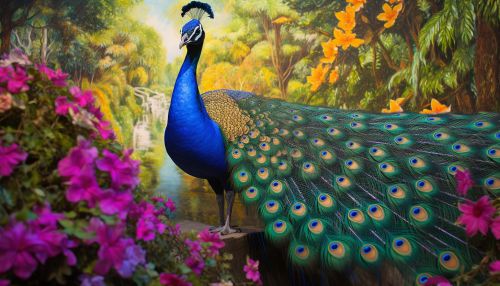Sexual Selection and Mate Choice
Introduction
Sexual selection, a concept first introduced by Darwin, is a mode of natural selection where members of one biological sex choose mates of the other sex to mate with, and compete with members of the same sex for access to members of the opposite sex. These preferences may be apparent in the form of mate choice. The concept of mate choice comes from the observation that traits in certain species are so exaggerated that they can hinder survival, but nonetheless, they persist.
Sexual Selection
Sexual selection operates when individuals of one sex (commonly the female) are choosy in their selection of sexual partners, and those choices are not random. This process is divided into two distinct mechanisms: intrasexual selection and intersexual selection.
Intrasexual Selection
Intrasexual selection involves competition between members of the same sex for mates. This often leads to the evolution of secondary sexual characteristics in males, such as the large antlers seen in deer or the elaborate courtship displays seen in many bird species. These traits may not directly contribute to survival, but they provide an advantage in mating.
Intersexual Selection
Intersexual selection, also known as mate choice, occurs when individuals of one sex (usually females) are choosy in selecting their mates. This can lead to the evolution of traits in the opposite sex (usually males) that the choosy sex finds attractive. These traits can range from physical characteristics, such as bright plumage in birds, to behavioral traits, such as elaborate courtship rituals.
Mate Choice
Mate choice is a mechanism of sexual selection where individuals of one sex choose their mates based on certain traits. This can be based on a variety of factors, including physical attractiveness, resources, or parental care abilities. Mate choice can have a significant impact on the evolution of species, as traits that are preferred by the choosy sex will become more common in the population over time.
Direct Benefits
In some cases, the choosy sex may receive direct benefits from their choice of mate. These benefits can include resources, such as food or territory, or parental care, such as help in raising offspring. For example, in some bird species, females may choose males that are able to provide them with high-quality nesting sites.
Indirect Benefits
In other cases, the choosy sex may receive indirect benefits from their choice of mate. These benefits are not immediate, but rather affect the genetic quality of their offspring. For example, a female may choose a male with attractive traits because those traits may indicate good genes, which can be passed on to her offspring.
Evolutionary Consequences of Sexual Selection and Mate Choice
Sexual selection and mate choice can have significant impacts on the evolution of species. Traits that are preferred by the choosy sex can become more common in the population over time, leading to changes in the physical and behavioral characteristics of a species.
Sexual Dimorphism
One of the most noticeable consequences of sexual selection is sexual dimorphism, where males and females of the same species differ in size, color, or other physical characteristics. This is often a result of intersexual selection, where one sex (usually females) chooses mates based on certain traits.
Speciation
Sexual selection and mate choice can also contribute to speciation, the process by which new species evolve. If different populations of the same species develop different mate preferences, this can lead to reproductive isolation and eventually the formation of new species.
Critiques and Controversies
While the concept of sexual selection and mate choice is widely accepted in the scientific community, it is not without its controversies. Some researchers argue that the importance of sexual selection has been overstated, and that natural selection plays a larger role in the evolution of species. Others argue that the concept of mate choice is too simplistic, and that individuals may make mating decisions based on a complex combination of factors, not just a single trait.
Conclusion
Sexual selection and mate choice are powerful forces in the evolution of species. Through these processes, individuals can influence the traits that are passed on to future generations, shaping the physical and behavioral characteristics of their species. While there is still much to learn about these processes, it is clear that they play a crucial role in the diversity of life on Earth.


